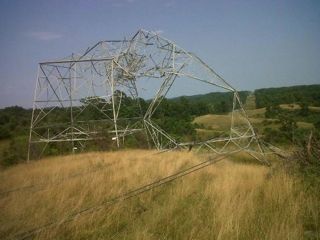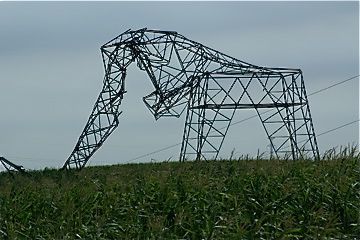FirstEnergy is currently fighting the WV PSC against setting reliability standards that may have prevented at least some of the storm damage that left consumers in the dark for more than a week, and is going to cost the consumers millions to repair/replace. FirstEnergy also fought against a WV PSC staff attorney's petition "requiring both TrAILCo and PATH and their corporate affiliates to file within thirty (30) days of receipt of this petition a plan in regards to the condition of their transmission facilities and a plan for the upgrading or replacing of their transmission facilities." The WV PSC decided not to speed up the submission of the condition report and upgrade plan, even though the WV Legislature had "urge[d] the West Virginia Public Service Commission to insure the reliability of West Virginia’s transmission system by proceeding as quickly as possible with a review of the condition of the Pruntytown to Mt. Storm transmission line and encouraging Monongahela Power and its parent company, FirstEnergy to rebuild this line, if the Commission’s study concludes that such construction is needed." Instead, the PSC allowed FirstEnergy to submit a report months later. In their report, FirstEnergy said that everything was hunky dory with their transmission lines in the state and therefore no repairs or upgrades were needed, and the PSC has taken no action to verify FirstEnergy's contentions or to require the actual upgrade plan they originally ordered. In their report, FirstEnergy did a whole bunch of whining about who would pay for the upgrade of their failing infrastructure. Who will pay for the recent failure? You will, of course, through future rate increases approved to allow the companies to recover their "spare no expense" response to the storm, and still make a hefty profit.
But, let's get back to that transmission tower failure in West Virginia and why the tower failure doesn't correlate with FirstEnergy's NOAA storm wind speed map, showing 20-40 mph gusts in the area of the failure. Did a 20 mph wind knock over a transmission tower? Probably not.
Take a look at FirstEnergy's failed tower:
Engineers have known for years that old transmission towers, such as FirstEnergy's, aren't designed to withstand the "downburst" winds that can occur with thunderstorms. Downburst wind has a different effect on transmission lines than the regular wind they were designed to withstand. Downburst wind creates tower failures that look like the pictures above.
"An investigation of the collapse of transmission towers due to downbursts has shown that damage of the members in the second and third panels above the bottom was quite significant, but no damage was observed in the bottom panel of the tower."
When will FirstEnergy and other companies who own the average 40-year old high-voltage transmission lines that criss-cross our state and nation, be required to upgrade their infrastructure to avoid these costly and dangerous failures? And when will these companies be required to design their towers to withstand downburst winds? Or are costly repair/replacement and occasional human casualties simply one more "acceptable" risk that landowners are expected to bear in order to serve "the greater good?"


 RSS Feed
RSS Feed